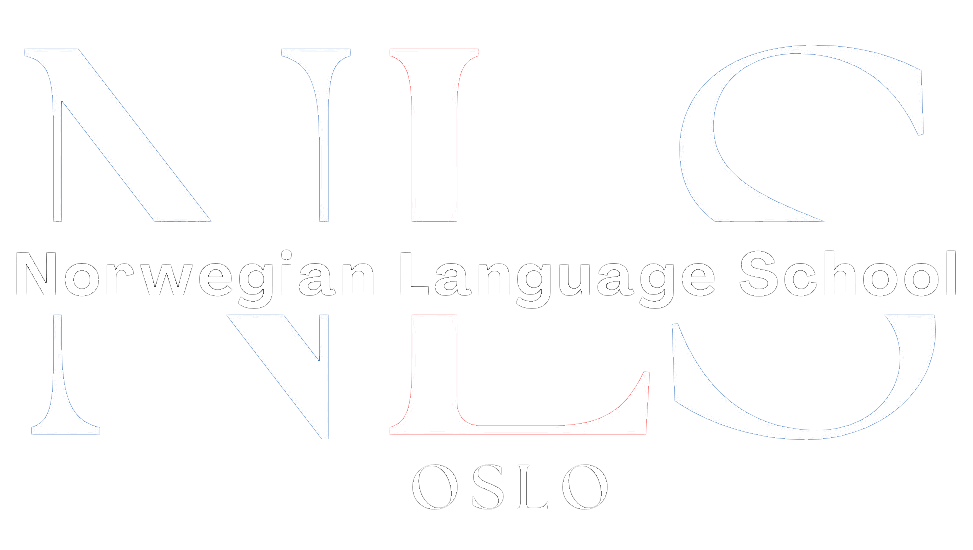
English Vocabulary for Social Media
In today’s digital age, navigating the ever-evolving landscape of social media can feel like learning a new language. From hashtags to emojis, the world of online communication has its own unique vocabulary that is crucial to master. But have you ever wondered why this social media terminology matters? Unravelling the mysteries of digital language can unlock the key to more effective and engaging online interactions. Ready to embark on a journey of social media linguistic mastery?
Table of Contents
ToggleKey Takeaways
- Understand the importance of mastering social media vocabulary to enhance online presence and communication.
- Explore the diverse range of terminology used across various social networking platforms.
- Discover how digital language has evolved and continues to shape online interactions.
- Recognise the benefits of utilising appropriate social media vocabulary in both personal and professional contexts.
- Gain insights into the best practices for leveraging social media language to achieve your desired goals.
Understanding the Basics of Social Media Communication
In today’s digital landscape, social media platforms have become an integral part of our daily lives. These virtual spaces not only facilitate connection and conversation but also possess their own unique lexicons, reflecting the evolving nature of online communication. Understanding the language of social media is crucial for effective digital literacy and engagement.
Common Social Media Platforms and Their Unique Language
From the ubiquitous Facebook to the microblogging platform Twitter, each social media platform has developed its own set of terminology. Users on Instagram, for instance, might be familiar with terms like “hashtag,” “filter,” and “reel,” while those on LinkedIn might be more accustomed to “endorsements,” “recommendations,” and “connections.” Navigating these platform-specific vocabularies is essential for seamless social media interactions.
The Evolution of Online Communication
The way we communicate online has undergone a remarkable transformation over the years. What once began as simple text-based exchanges has evolved into a rich tapestry of multimedia, emojis, and real-time interactions. This rapid evolution has given rise to a new generation of social media lexicons, with terms like “viral,” “meme,” and “live-streaming” becoming commonplace.
Why Social Media Vocabulary Matters
Keeping up with the ever-changing social media vocabulary is not just a matter of staying relevant; it is a crucial aspect of digital literacy. Understanding the nuances of social media language can enhance one’s ability to effectively navigate these platforms, express themselves clearly, and engage with others in a meaningful way. Whether you are a business professional, a content creator, or an individual user, mastering social media vocabulary can unlock new opportunities for connection, collaboration, and personal growth.
Essential English Vocabulary for Social Media
The world of social media is brimming with a unique lexicon that helps users navigate the digital landscape. Mastering this specialised vocabulary is crucial for effective communication, content creation, and understanding platform-specific features. In this section, we delve into the essential English terms every social media enthusiast should know.
From the basics of user interactions to the nuances of content performance, this comprehensive guide covers the key social media terms that have become an integral part of our digital vernacular. Whether you’re a seasoned social media professional or a newcomer to the realm, familiarising yourself with this essential vocabulary will empower you to engage more meaningfully with your online community.
Core Social Media Terminology
- Post – A piece of content shared on a social media platform
- Like – A way to express positive sentiment towards a post
- Comment – A written response to a post, enabling dialogue
- Share – The act of re-posting content to one’s own network
- Follower – A user who subscribes to receive updates from another account
- Hashtag – A keyword or phrase preceded by the # symbol, used to categorise content
Content Creation Terminology
- Caption – The text accompanying a visual post
- Filter – A visual effect applied to an image or video
- Meme – A piece of content that is widely shared and imitated online
- Viral – Content that gains widespread popularity and is rapidly shared
Platform-Specific Terms
| Platform | Unique Terms |
|---|---|
| Tweet, Retweet, Mention | |
| Story, Reel, Highlight | |
| Connection, Endorsement, Recommendation |
Mastering this essential social media vocabulary will empower you to navigate the digital landscape with confidence, engage more effectively with your online community, and unlock the full potential of these powerful communication platforms.
Popular Abbreviations and Acronyms in Social Media
In the dynamic world of social media, a unique language has emerged, characterised by a myriad of abbreviations and acronyms. These compact expressions have become an integral part of digital communication, allowing users to convey their thoughts and ideas efficiently. Let us explore the key categories of these social media shortcuts.
Business-Related Social Media Abbreviations
For professionals navigating the social media landscape, understanding common business-oriented abbreviations is crucial. These include terms like B2B (Business-to-Business), SMM (Social Media Marketing), and ROI (Return on Investment), which help individuals and organisations track their social media performance and effectiveness.
Casual Communication Shortcuts
- ICYMI (In Case You Missed It)
- FWIW (For What It’s Worth)
- TBH (To Be Honest)
- IRL (In Real Life)
These casual abbreviations are widely used in social media interactions, allowing users to express their sentiments and experiences in a concise and relatable manner.
Platform-Specific Terms
- RT (Retweet) – A common Twitter term for sharing a post with your followers.
- DM (Direct Message) – A private message sent to another user on various social media platforms.
- IG (Instagram) – A widely recognised abbreviation for the popular photo-sharing social network.
- FB (Facebook) – A shortened version of the world’s largest social media platform.
These platform-specific abbreviations help users navigate the unique features and functionalities of different social media channels, fostering efficient communication and interaction.
By familiarising oneself with these popular abbreviations and acronyms, social media users can enhance their digital communication skills, engage more effectively with their audience, and stay attuned to the ever-evolving language of the online world.
Hashtag Culture and Usage
In the dynamic realm of social media, hashtags have emerged as a powerful tool for content discovery, engagement, and trend-tracking. This section delves into the captivating world of hashtag strategy, exploring how social media users can leverage these digital signposts to their advantage.
Hashtags, denoted by the iconic pound symbol (#), serve as a gateway to a wealth of content, allowing users to easily find and follow discussions on specific topics. From trending social media trends to niche interests, the strategic use of hashtags can significantly enhance the visibility and reach of your posts, driving meaningful interactions with your audience.
Crafting Effective Hashtags
Crafting effective hashtags requires a keen understanding of your target audience and the prevalent conversational trends on social media platforms. Consider the following guidelines when choosing your hashtags:
- Keep it concise and straightforward: Opt for short, memorable hashtags that clearly convey the essence of your content.
- Leverage relevant keywords: Incorporate keywords that are closely aligned with your content and the interests of your target audience.
- Research trending topics: Explore popular hashtags and social media trends to identify opportunities for increased visibility and engagement.
- Maintain consistency: Use a consistent set of hashtags across your social media posts to build a recognisable brand identity and facilitate content discovery.
Harnessing the Power of Hashtags
Embracing the power of hashtags can significantly amplify your social media presence and content discovery. By strategically incorporating relevant hashtags into your posts, you can:
- Increase visibility and reach: Hashtags make your content more discoverable, allowing it to be found by users searching for specific topics or trends.
- Engage with communities: Participate in ongoing conversations and connect with like-minded individuals by using relevant hashtags.
- Analyse content performance: Track the performance of your hashtag-driven content and adjust your strategy accordingly to optimise for better results.
Embracing the dynamic world of hashtags can unlock a wealth of opportunities for social media success, enabling you to navigate the ever-evolving landscape of content discovery and engagement.
Engagement-Related Terms and Metrics
Understanding the language of social media engagement is crucial for effectively measuring and optimising your content’s performance. From social media analytics to engagement metrics, this section explores the key terms and vocabulary you need to know.
Analytics and Performance Indicators
Delving into the world of social media analytics, we encounter a range of key performance indicators (KPIs) that help track the success of your content. These include metrics such as reach, impressions, likes, shares, comments, and click-through rates. Mastering the nuances of these terms can provide valuable insights to guide your social media strategy.
Interaction Terminology
- Likes: A simple way for users to express their appreciation for your content.
- Comments: Engaging with your audience through thoughtful responses and discussions.
- Shares: When users redistribute your content to their own networks, amplifying your reach.
- Mentions: When your brand or account is referenced in other users’ posts.
- Tagging: Linking specific users to your content, fostering deeper connections.
Content Performance Vocabulary
Evaluating content performance involves terms such as engagement rate, click-through rate, conversion rate, and audience retention. These metrics provide insights into how your target audience interacts with and responds to your social media content, empowering you to refine and optimise your strategy.
By mastering this engagement-related vocabulary, social media professionals can make informed decisions, track their progress, and continuously improve their content’s performance across various platforms.
Content Creation Terms for Social Media
In the ever-evolving world of social media, content creation has become a crucial aspect of effective digital marketing strategies. Understanding the terminology associated with content creation can help social media professionals navigate this dynamic landscape with ease. Let’s explore some key terms that are essential for crafting captivating social media content.
Content Ideation: This refers to the process of brainstorming and generating ideas for the type of content that would resonate with your target audience on social media platforms. It involves considering factors such as content strategy, user preferences, and platform-specific best practices.
Content Formatting: Social media content often requires specific formatting to ensure optimal presentation and engagement. This includes understanding the appropriate dimensions, aspect ratios, and file types for images, videos, and other multimedia content across various social media channels.
- Image Dimensions: Optimising image sizes for platforms like Instagram, Facebook, and Twitter can enhance the visual appeal and responsiveness of your content.
- Video Formatting: Knowing the recommended video formats, file sizes, and aspect ratios for platforms like YouTube, TikTok, and LinkedIn can help create captivating video content.
Content Scheduling and Posting: Effective content strategy often involves planning and scheduling the publication of social media posts at optimal times to reach your audience. Tools like social media management platforms can assist with this process, allowing you to pre-schedule and automate content posting.
| Social Media Platform | Optimal Posting Times | Recommended Formats |
|---|---|---|
| Wednesday at 11 AM, Friday at 1 PM | Image, Video, Link, Text | |
| Tuesday and Thursday between 11 AM and 2 PM | Image, Video, Carousel | |
| Monday through Friday, 9 AM to 4 PM | Text, Image, Video, GIF |
By understanding these content creation terms and best practices, social media professionals can develop a robust content strategy and create compelling content that resonates with their target audience across various social media platforms.
Professional Networking Language on LinkedIn
In the realm of professional networking, LinkedIn has emerged as the go-to platform for career-minded individuals to connect, collaborate, and cultivate their professional personas. Mastering the language of this dynamic digital landscape is crucial for navigating the intricate web of LinkedIn terminology, professional networking, and career development.
Career Development Terms
LinkedIn’s vocabulary is replete with terms that reflect the platform’s focus on professional growth and advancement. Concepts like “career path,” “skill endorsements,” and “recommendations” are integral to showcasing one’s career development and attracting potential opportunities. Understanding these terms can help users effectively highlight their expertise and achievements to potential employers or industry peers.
Professional Connection Vocabulary
Building a robust network of professional connections is the lifeblood of LinkedIn. Terminology such as “1st-degree connections,” “mutual connections,” and “InMail” are essential for navigating the platform’s intricate web of professional connections. Leveraging this language can enable users to forge meaningful relationships, collaborate on projects, and unlock new avenues for career advancement.
Business Networking Phrases
- Endorsing a connection’s skills
- Requesting a recommendation
- Sending a personalised connection request
- Joining relevant industry groups
- Engaging with content in your network
- Sharing your own thought-provoking posts
Effective business networking on LinkedIn often involves using specific phrases and etiquette to showcase one’s expertise, demonstrate a genuine interest in others, and foster mutually beneficial relationships. Mastering these LinkedIn terminology and communication tactics can be a game-changer in unlocking new professional opportunities.
| LinkedIn Terminology | Professional Networking | Career Development |
|---|---|---|
| Connection Request | Endorsement | Skill Showcase |
| InMail | Recommendations | Career Path |
| Mutual Connections | Industry Groups | Thought Leadership |
Instagram and Visual Content Terminology
In the ever-evolving world of social media, Instagram has emerged as a leading platform for visual content and engagement. From captivating images to captivating videos, the vocabulary of this image-centric network is crucial for crafting an effective visual content strategy and navigating the nuances of social media photography.
One of the key Instagram features is the feed, where users can share their Instagram features and engage with content from others. The grid refers to the layout of these posts, allowing users to create a cohesive and visually appealing profile. Mastering the art of hashtag usage is also essential, as these keywords help to categorise and discoverability content on the platform.
- Explore: The feature that allows users to discover new content based on their interests and engagement.
- Stories: Ephemeral content that disappears after 24 hours, often used for behind-the-scenes or live updates.
- Reels: Short-form video content, inspired by TikTok, that can be enhanced with filters, music, and creative effects.
- Highlights: Saved Stories that are displayed on a user’s profile, allowing them to showcase their best content.
Understanding the nuances of Instagram’s visual language is crucial for crafting a successful social media photography strategy. From leveraging the platform’s editing tools to optimising content for maximum engagement, the vocabulary of Instagram can help businesses and individuals alike to thrive in the visually-driven world of social media.
| Instagram Feature | Description | Potential Use Cases |
|---|---|---|
| Carousel Posts | The ability to share multiple images or videos in a single post. | Showcasing product features, sharing a behind-the-scenes look, or telling a visual story. |
| Instagram Live | A feature that allows users to broadcast live video content to their followers. | Hosting Q&As, product demonstrations, or exclusive events. |
| Instagram Guides | A feature that allows users to curate and share collections of posts, products, or places. | Providing educational resources, travel recommendations, or product suggestions. |
Twitter-Specific Language and Expressions
The world of microblogging has its own unique vocabulary, and Twitter is no exception. Understanding the Twitter lingo is essential for effective communication and engagement on this dynamic platform. From the art of crafting concise and impactful tweets to navigating the intricate network of tweet engagement, let’s delve into the microblogging terminology that sets Twitter apart.
Tweet Composition Vocabulary
Crafting the perfect tweet requires a solid grasp of the platform’s features and conventions. Key terms in this realm include:
- Hashtag – A keyword or phrase preceded by the # symbol, used to categorise content and facilitate topic-based conversations.
- Mention – The use of the @ symbol followed by a username to directly address or tag another user.
- Retweet – The act of sharing someone else’s tweet with your followers, amplifying the original message.
- Quote Tweet – A retweet accompanied by your own commentary, allowing you to add your unique perspective.
Twitter Engagement Terms
Engagement is the lifeblood of Twitter, and understanding the metrics that measure it is crucial. Familiarise yourself with terms like:
- Impression – The number of times a tweet is displayed in users’ timelines.
- Engagement Rate – The ratio of user interactions (likes, retweets, replies) to the number of impressions.
- Reach – The estimated number of unique accounts that have seen your tweet.
- Conversation Rate – The percentage of people who reply to your tweet out of those who have seen it.
| Metric | Definition | Importance |
|---|---|---|
| Impression | The number of times a tweet is displayed in users’ timelines. | Indicates the potential visibility of your content. |
| Engagement Rate | The ratio of user interactions (likes, retweets, replies) to the number of impressions. | Measures the effectiveness of your tweets in driving meaningful engagement. |
| Reach | The estimated number of unique accounts that have seen your tweet. | Provides insight into the broader impact of your content. |
| Conversation Rate | The percentage of people who reply to your tweet out of those who have seen it. | Indicates the level of two-way communication and dialogue your tweets are generating. |
By familiarising yourself with this Twitter lingo and understanding the key metrics that drive tweet engagement, you can unlock the true potential of this dynamic microblogging platform and connect with your audience in a meaningful and impactful way.
Facebook Marketing and Communication Terms
The realm of Facebook marketing and communication is rich with a diverse vocabulary that enables professionals to navigate the platform’s nuanced features and engage their audiences effectively. From the fundamentals of Facebook’s advertising tools to the intricate language of social media marketing, this section delves into the essential terminology every marketer should master.
Facebook Advertising Lingo
Facebook’s advertising platform is a powerful tool for businesses of all sizes. To leverage it successfully, one must familiarise themselves with terms like Facebook Ads Manager, ad objectives, ad targeting, ad placement, cost-per-click (CPC), and return on ad spend (ROAS). These concepts form the backbone of creating and optimising impactful Facebook advertising campaigns.
Facebook Business Tools and Metrics
Beyond advertising, Facebook offers a suite of business tools that enable seamless social media marketing. Familiarise yourself with terms such as Facebook Business Manager, Facebook Pixel, Facebook Insights, organic reach, and engagement rate. These Facebook business tools provide valuable data and analytics to help marketers make informed decisions and maximise their impact on the platform.
Facebook Engagement Terminology
At the heart of Facebook marketing lies the language of engagement. Understand the meaning of terms like likes, comments, shares, reactions, post reach, and viral reach. These metrics not only indicate the performance of your content but also provide insights into how your audience is interacting with your brand on the platform.
| Facebook Marketing Terminology | Definition |
|---|---|
| Facebook Ads Manager | The primary platform for creating, managing, and optimising Facebook advertising campaigns. |
| Ad Objectives | The specific marketing goals you want to achieve with your Facebook advertising campaigns, such as increased brand awareness, website traffic, or conversions. |
| Ad Targeting | The process of selecting your target audience based on factors like demographics, interests, behaviours, and more. |
| Cost-per-Click (CPC) | The amount you pay each time someone clicks on your Facebook ad. |
| Return on Ad Spend (ROAS) | A metric that measures the revenue generated for every pound spent on Facebook advertising. |
By mastering these Facebook marketing and communication terms, marketers can navigate the platform’s features with confidence, create compelling content, and drive meaningful engagement with their target audience.
Best Practices for Social Media Writing
In the dynamic landscape of social media, effective writing is the cornerstone of successful digital communication. Whether you’re crafting content for your personal brand or managing a professional social media presence, mastering the art of social media writing is essential. Here are some best practices to consider when navigating the realm of social media writing tips, online content creation, and digital communication style.
Tone and Style Guidelines
The tone and style of your social media content should be tailored to your target audience and the specific platform you’re using. Maintain a friendly, conversational, and approachable tone to foster engagement. Avoid overly formal language or jargon, and instead, focus on using plain, easy-to-understand language that resonates with your followers.
- Adopt a casual, relatable tone that reflects your brand’s personality.
- Use contractions and colloquial expressions to appear more conversational.
- Incorporate emojis and visual elements to add personality and emphasis.
Content Structure Tips
Crafting social media content that captures attention and drives engagement requires a strategic approach to structure and formatting. Break down your messages into bite-sized, scannable chunks, and use visual cues to guide your audience through the content.
- Utilise short, concise paragraphs with clear, compelling opening sentences.
- Employ bullet points, numbered lists, and section headings to organise information.
- Incorporate eye-catching visuals, such as images, GIFs, or videos, to complement your text.
By following these best practices for social media writing tips, online content creation, and digital communication style, you can craft engaging and impactful social media content that resonates with your audience and helps you achieve your digital marketing objectives.
Conclusion
As we’ve explored, mastering English vocabulary for the digital realm of social media is crucial for individuals and businesses alike. Developing a social media fluency not only enhances your online presence but also empowers you to communicate effectively, engage with your audience, and navigate the ever-evolving landscape of digital communication.
The ability to understand and utilise the unique language of social platforms, from popular abbreviations to platform-specific terms, can significantly boost your digital communication skills. Whether you’re crafting captivating content, analysing performance metrics, or networking with professionals, this knowledge equips you to thrive in the dynamic world of social media.
Ultimately, embracing and applying the essential English vocabulary covered in this article can elevate your online presence, solidify your brand identity, and foster meaningful connections with your digital community. By staying ahead of the curve and continuously expanding your social media vocabulary, you’ll be well-positioned to navigate the ever-changing digital landscape and achieve your strategic goals.
FAQ
What is the significance of understanding English vocabulary for social media?
What are some of the major social media platforms and their unique language?
How has online communication evolved, and why does social media vocabulary matter?
What are some common abbreviations and acronyms used in social media?
How can the use of hashtags impact content visibility and discoverability on social media?
What are some key terms and metrics related to social media engagement and content performance?
What vocabulary is essential for effective content creation on social media?
How can the language used on LinkedIn help with professional networking and career development?
What are the key Instagram-specific terms and their significance in visual content strategies?
What are some of the unique expressions and language used on Twitter, and how can they be leveraged effectively?
What are the essential Facebook-related terms for marketing and communication?
What are the best practices for effective social media writing in terms of tone, style, and content structure?
If you want to learn Norwegian, you can register for classes here. We look forward to hearing from you and helping you become fluent in Norwegian.






